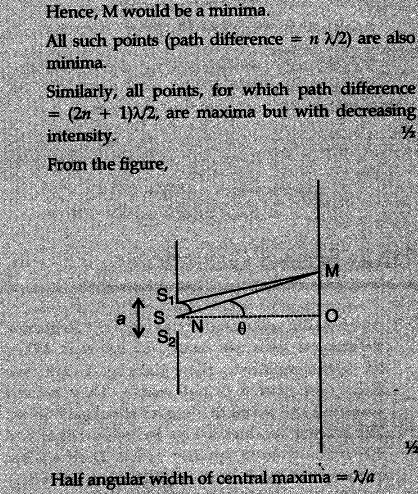A parallel beam of monochromatic light falls normally on a narrow slit of width V to produce a diffraction pattern on the screen placed parallel to the plane of the slit Use Huygens’ principle to explain that
(i) the central bright maxima is twice as wide as the other maxima.
(ii) the intensity falls as we move to successive maxima away from the centre on either side.
Explanation : As per Huygens’ Principle, net effect at any point =Sum total of contribution of all wavelets with proper phase difference.
At the central point (O) the contribution from each half in SS1 is in phase with that from the corresponding part in SS2 Hence, O is a maxima.


The size of central maxima w’ill be reduced to half and intensity of central maxima will be tour times if slit is made double the original width